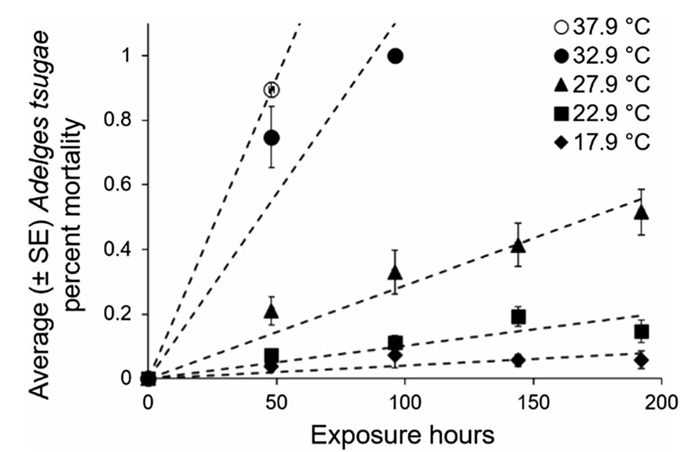| Tweet | Follow @co2science |
Paper Reviewed
Mech, A.M., Tobin, P.C., Teskey, R.O., Rhea, J.R. and Gandhi, K.J.K. 2018. Increases in summer temperatures decrease the survival of an invasive forest insect. Biological Invasions 20: 365-374.
One of the negative ecological outcomes that are predicted to result from CO2-induced global warming is an increase in the success of invasive insects that wreak havoc on natural ecosystems. Rising temperatures, for example, are thought to enhance survivability, development and fecundity, as well as facilitate an expansion of geographical range. However, as noted by Mech et al. (2018), these projected impacts have primarily focused on changes in winter temperatures, with "limited attention to the role that summer heat may play in shaping species ranges or fitness." In fact, Mech et al. bluntly note that "studies on the effect of increased summer temperatures projected under climate change on aestivating insects are non-existent." Thus, hoping to remedy this data void, the team of five researchers set out to quantify the effects of rising summer temperatures on the survival of the hemlock woolly adelgid (Adelges tsugae), a "small, sessile, sap-sucking insect native to Asia and western North America that is causing widespread mortality of eastern hemlock (Tsuga cadadensis), a foundation species in eastern North American forests."
To accomplish their design, Mech et al. collected over 4200 specimens of A. tsugae that they obtained during the summer of 2011 from the Chattahoochee National Forest, Georgia. The insects were brought back to a laboratory and subjected to temperatures ranging from 20 to 40 °C over four duration exposures of 48, 96, 144 and 192 hours, after which their mortality rates were analyzed. In addition, they conducted field work in Georgia to verify the findings they obtained in the lab.
Both laboratory and field data revealed that rising temperatures decreased the survival of A. tsugae. As shown in the figure below, mortality was minimal at temperatures characteristic of its native range (<25 °C), but "markedly increased (up to 100%) when exposed to temperatures that occur occasionally or rarely in natural settings (>30 °C)."
In commenting on this finding, Mech et al. acknowledge that "overall, the increasing temperatures associated with climate change may have a positive influence on the conservation of [eastern hemlock] through its negative effects on a destructive non-native species." What is more, they say their findings "also underscore the necessity of examining increasing summer temperatures in attempts to understand the full effects of climate change on native and non-native invasive insects." For when such impacts are included, they can alter the very sign of the projected influence of these damaging insects, which is exactly what occurred in the case of A. tsugae and eastern hemlock. When rising winter temperatures were examined, the mortality of eastern hemlock was high; but when rising summer temperatures were included, the fate of this foundation tree species fared considerably well, whereas the insect that preys upon it did not. Isn't it amazing how a negative prediction can turn positive when all the relevant data are considered?

Figure 1. Linear relationships between average Adelges tsugae mortality (± SE) and duration of exposure (hours) for each growth chamber mean temperature (°C). Results based on the examination of 4215 A. tsugae collected in 2011 from the Chattahoochee National Forest, Georgia. Source: Mech et al. (2018).




